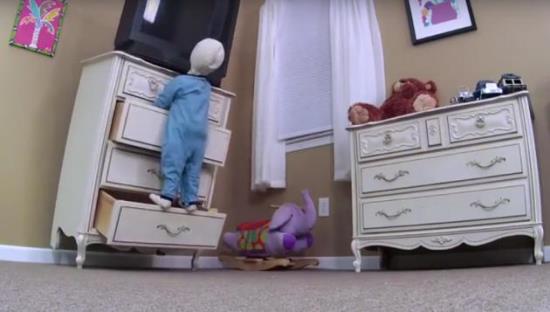Furniture stability standard under review
Source:woodworkingnetwork.com
The Stop Tip-overs of Unstable, Risky Dressers on Youth (STURDY) Act responds to safety concerns resulting from fatal furniture tip-over incidents involving young children.

Launched last year, the CPSC's Anchor-It campaign warns of the dangers of furniture tip-overs and offers solutions to prevent them.
Sen. Robert Casey Jr. (D-PA) proposed legislation earlier this month calling for the U.S. Consumer Product Safety Commission (CPSC) to adopt a product safety rule for free-standing clothing storage units. The Stop Tip-overs of Unstable, Risky Dressers on Youth (STURDY) Act responds to safety concerns resulting from fatal furniture tip-over incidents involving young children.
The Act requires the CPSC to determine whether the current voluntary ASTM furniture stability standard (F2057-14) “adequately protects children from tip-over related death or injury” and whether it is “likely to be substantially complied with by furniture manufacturers.”
If the current voluntary standard is not considered by the CPSC to be “adequate,” the ASTM Subcommittee on Furniture Safety will have six months to revise it. However, if the CPSC still deems the standard inadequate or does not believe it is “likely to be substantially complied with by furniture manufacturers,” then the STURDY Act requires the CPSC to create a mandatory stability standard within 18 months that “adequately protects children from tip-over related death or injury from free-standing clothing storage units.”
Three fatal furniture tip-over accidents cited by Casey in his announcement of the legislation all involved products that did not meet the current ASTM voluntary furniture stability standard, which was adopted in 2000.
“The American Home Furnishings Alliance and its member companies are not opposed to researching and solving any known deficiencies in the existing ASTM stability standard,” said AHFA CEO Andy Counts. “However, we are not aware of any fatal accidents involving products that comply with the existing standard. Further, CPSC staff members say they do not know whether any of the accidents within their incident data involved furniture that complied with the existing standard.”
There are millions of compliant products in the marketplace today, Counts added. “Without knowing how, or even if, compliant products are failing, the ASTM furniture safety subcommittee can’t possibly know what to change.
“Further, if the majority of fatal accidents involve old furniture, rather than products the parent purchased new, it is possible changes to the stability standard would have no impact on the rate of fatalities. How can manufacturers of new furniture impact accidents that might primarily involve second-hand, damaged, antique or otherwise unstable furniture?” Counts asked.
AHFA said it favors the current voluntary ASTM furniture stability standard and consistent, vigorous support of that standard by the CPSC, which has the authority through recall action to require non-compliant, unsafe products to be removed from the marketplace.
In a related effort, the CPSC last year launched a public education campaign to prevent furniture tip-overs.
(Source: woodworkingnetwork.com)





 沪公网安备31010402003309号
沪公网安备31010402003309号



